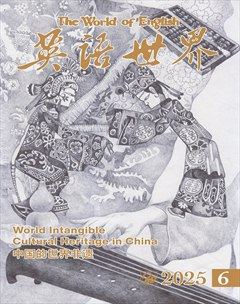Shadow puppets have been a cherished form of entertainment in China for centuries. This traditional art form combines storytelling, music, and intricate puppetry to create a mesmerizing experience for audiences of all ages. In this article, we will delve into the enchanting world of Chinese shadow puppets, exploring their history, techniques, and cultural significance.
千百年来,皮影戏一直是深受中国人喜爱的娱乐形式。这种传统艺术形式集讲故事、音乐和精妙的皮影表演于一身,男女老少均为之着迷。在本文中,我们将深入中国皮影戏的迷人世界,探索其历史,探寻其技艺,探究其文化意义。
The origins of Chinese shadow puppets can be traced back to over 2,000 years ago during the Han Dynasty. It is believed that the art form was initially used as a form of divination1, with the puppets being used to cast shadows on a screen to predict the future. Over time, shadow puppetry evolved into a popular form of entertainment, performed in villages and at festivals throughout China.
中国皮影戏的历史可追溯到2000多年前的汉朝。相传,这种艺术形式最初用于占卜,通过投射在幕布上的人偶影子来预测未来。随着时间的推移,皮影戏逐渐演化成一种广受欢迎的娱乐形式,在中国农村和节日庆典上表演。
The puppets themselves are made from translucent leather or parchment, carefully cut and shaped to depict various characters and animals. Each puppet is attached to a long bamboo stick, allowing the puppeteer to manipulate their movements behind a backlit2 screen. The puppets are brought to life through the skillful manipulation of the puppeteer, who uses their hands and fingers to create fluid and lifelike movements.
人偶由半透明的皮革或羊皮纸制作而成,经过精心切割和剪裁呈现出各种人物与动物形态。每个人偶都绑在一根长竹竿上,从而表演者能够在背光幕布后面操纵动作。表演者动动手指,人偶便做出活灵活现的动作。他们高超的技艺仿佛给人偶注入了生命。
Chinese shadow puppetry is known for its intricate craftsmanship and attention to detail. The puppets are often adorned with colorful costumes and accessories, adding to their visual appeal. The puppeteers also use various techniques to create different effects, such as using different sizes of puppets to create depth and perspective, or using multiple puppets to create complex scenes.
中国皮影戏以工艺精妙和关注细节而著称。人偶身着彩衣配饰,在视觉上增加了吸引力。表演者还使用多种技艺来营造不同效果,例如使用大小不一的人偶创设立体感、变换视角,或者使用多个人偶呈现复杂场景。
The performances are accompanied by traditional music, played on instruments such as the erhu (a two-stringed fiddle) and the guzheng (a plucked zither), adding to the immersive experience.
皮影表演通常配以二胡(一种双弦提琴)或古筝(一种拨弦式的扁琴)演奏的传统音乐,增强了观众的沉浸式体验。





